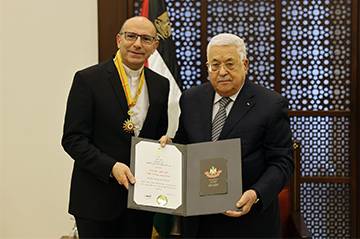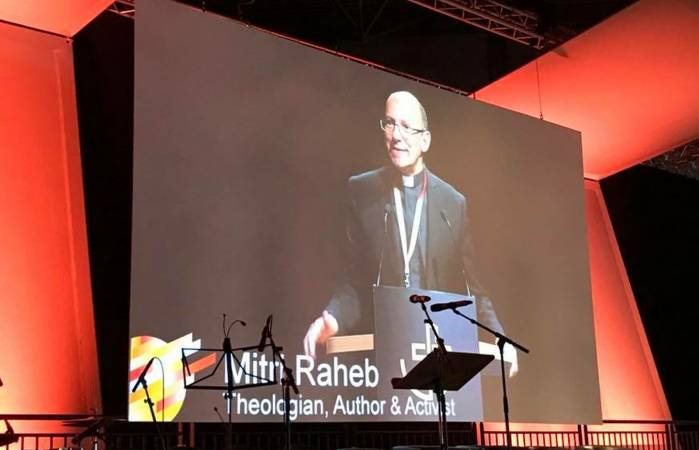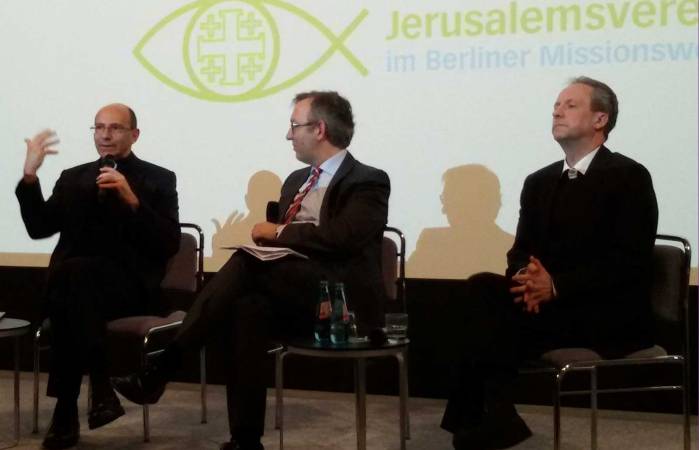On Palestinian Unity
On Palestinian Unity
A German delegation recently asked me the question: “We really can’t understand the Palestinians, why can’t they unite? Why can’t Fatah and Hamas join forces, especially when facing an Israeli occupation that doesn’t spare any of them?” I could feel in the question a sense of bewilderment and blame. I answered: “But you as German should understand this phenomena better than others!” The expression on his face made it clear that he didn’t understand my answer. So I continued saying: “Remember when Germany was divided into two parts, East and West; was the reason behind that the German people were not organized, wise, and responsible enough, or where there other reasons? Wasn’t the cold war between East and West the main reason behind that? The magnetic fields of the two world superpower were so strong that it divided countries (like Germany and Korea), regions (Horn of Africa), and continents (Europe). Something similar is happening in Palestine today, although it has nothing to do with the old cold war. In fact the polarization within Palestine is an outcome of regional geo olitics, international as well as Israeli and intra-Palestinian politics.”
- The Geo-politics of the Middle East
Looking at the history of Palestine “long duree” one would realize that Palestine is a small strip of land situated between major regional powers that developed early in history and continued to influence its fate. There is Egypt on the south west, Europe to the west across the Mediterranean, Turkey to the North, Syria and Iraq to the North East, and a bit further Iran. Those five powers have natural and human resources, political as well as military power, and have been at one time of history imperial powers. Palestine is very much dependent on those regional powers. What happens within those powers is mirrored to a certain extent in Palestine. Often the magnetic fields of two of those regional powers collide on Palestinian soil, dividing the country into two. The most fertile land in Palestine was often used as a battle field for those regional powers. Today you have Syria and Iran on the one side backing Hamas, Sisi’s Egypt on the other side backing Fatah , and Turkey pulling in a third direction. But these historical powers are not the only players in the region. The Petro-Dollar helped Saudi Arabia and Qatar become regional powers with lots of resources used to buy influence and cloud, especially within the poorer and dependent countries of the region. While Saudi Arabia backs President Abbas, Qatar is more supportive of Hamas. But there is also a third regional polarization taking place in the Middle East of today: Old national regimes (seemingly secular) are colliding with different forms of political Islam (neo-conservative capitalist in Turkey), (Muslim Brotherhood led in Egypt and Palestine), and (Islamic State “ISIS” controlled in Syria and Iraq). The rise of the Justice and Development party in Turkey in 2002, Hamas victory in the 2006 Palestinian elections as well as the Muslim Brotherhood victory in the Egyptian election in 2012 gave the impression as if the polarization has come to an end with a clear winner, namely political Islam. Yet the counter revolution in Egypt in 2014 and the fact that the Assad regime is still in power in Syria shows that the polarization of the Middle East is far from over. Fatah and Hamas thus keep repositioning themselves according to the power shifts and developments in these countries.
- International Politics
The international community has been part of the problem in Palestine. Not only did they not recognize the Hamas government back in 2006, but they keep preventing any serious reconciliation between the two Palestinian fractions. The fact that both the Palestinian authority and Hamas are so dependent on foreign financial funding is a clear indication that under the current circumstances a Palestinian unity is far from reach.
- Israeli Politics
After the eruption of the second Intifada in the year 2000 Israel took a decision to separate Gaza from the West Bank, thus eliminating any possibility for a two state solution. The Unilateral disengagement from the Gaza Strip in 2005 aimed at weakening the Palestinian Authority grip over Gaza and thus allowing Hamas to take control slowly but surely. The three Israeli wars on Gaza were meant to strengthen Hamas political image and to weaken them only to the extent that they can’t harm Israel, but keep them strong enough to continue challenging Fatah. On the other hand, Israel allows the Palestinian Authority to have as little authority as possible with no authority whatsoever over Gaza. Israel created the rift between Gaza and the West Bank and is relaxed as long as the two geographical entities are separated geographically and politically.
- Palestinian Politics
So are the Palestinian mere victims of regional, international as well as Israeli politics? Can’t they do anything to change the statuesque? The Polls show that the majority of the Palestinian people want unity. The two major Palestinian parties, Fatah and Hamas, may pay lip service to unity, but for the above mentioned reasons their hands are tight. With under-developed democratic structures, the absence of the long overdue presidential and legislative elections and the unwillingness to share or alternate power there is no reason to believe that any kind of unity is in near sight. Real unity is under the current circumstances nothing but a wishful thinking; hindered by Israel, lacking any regional or international backing and not attractive enough for those currently in power. Yet with a volatile region, a dwindling hope for a political solution based on two states, and a growing financial crisis in both the West Bank and Gaza, things can change.
Rev. Dr. Mitri Raheb - Bethlehem



